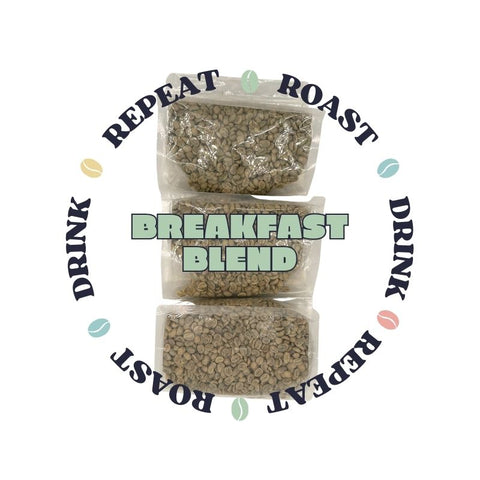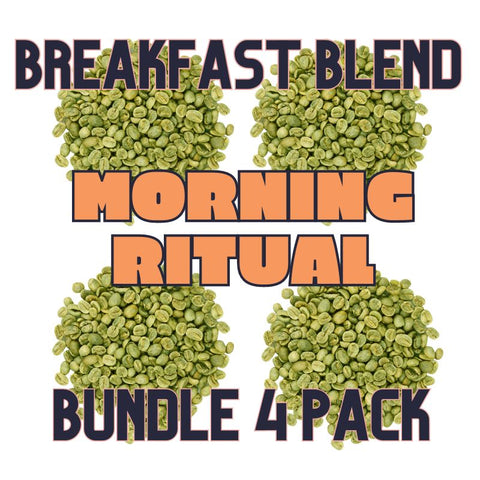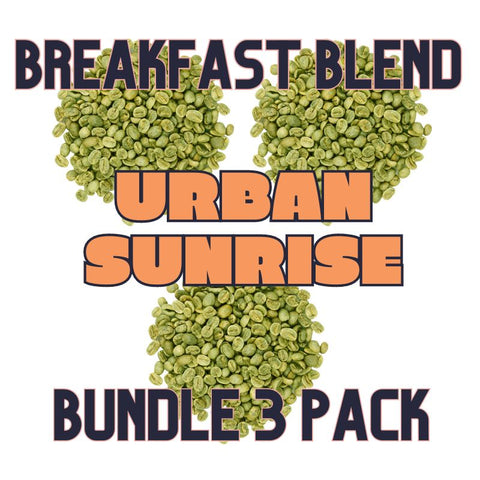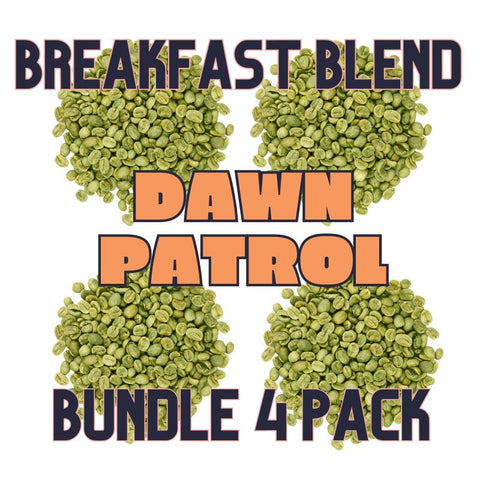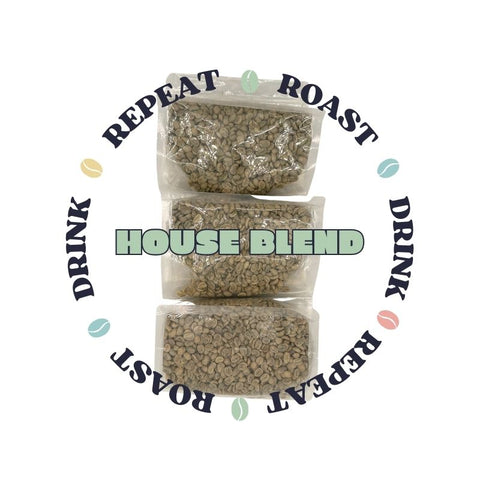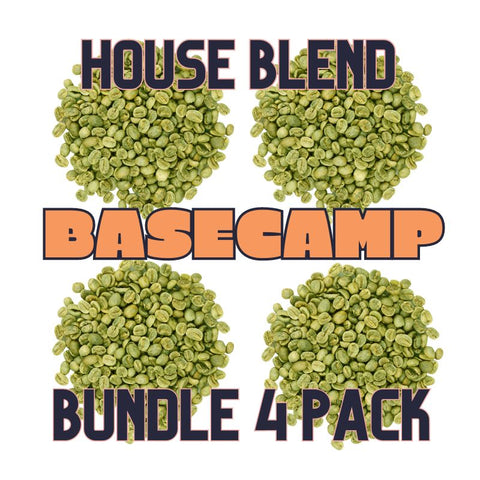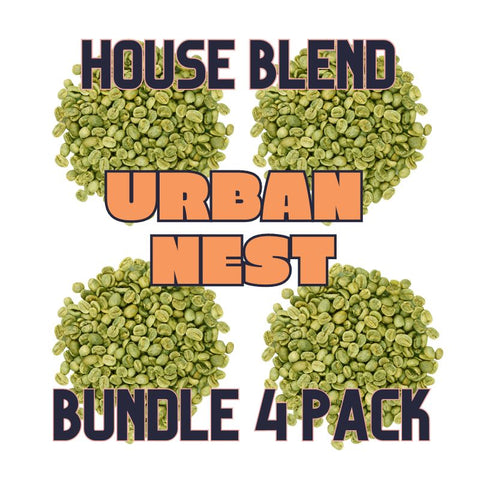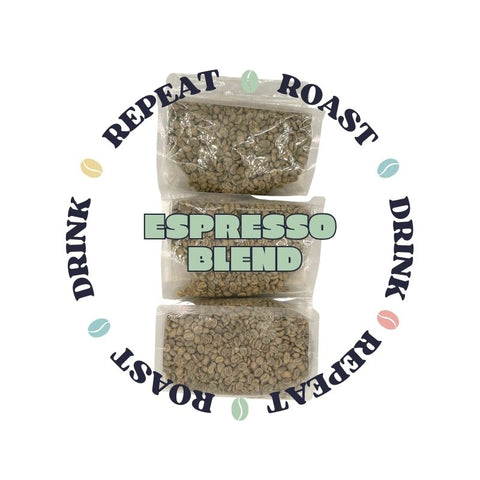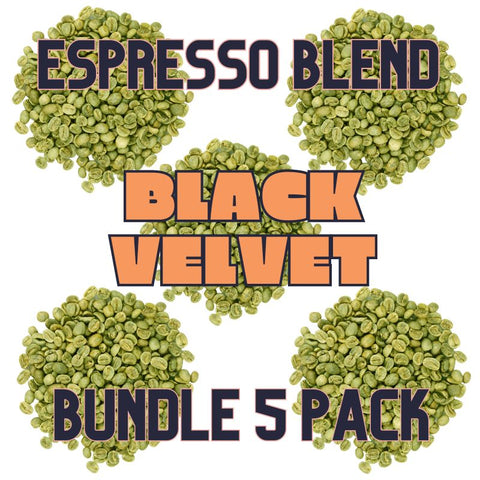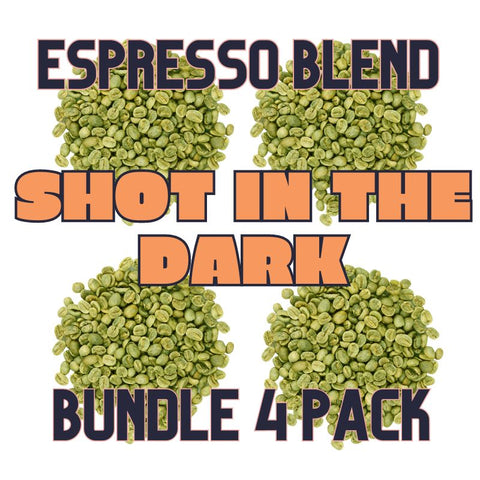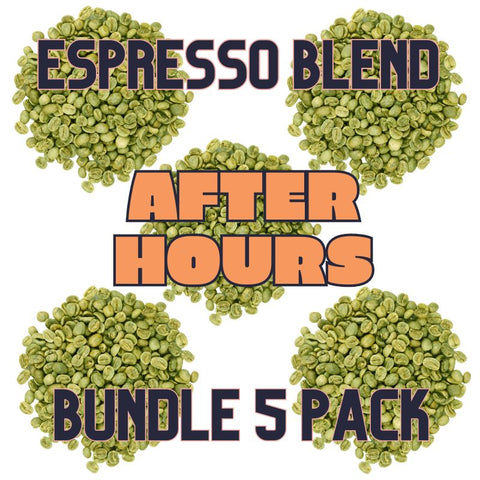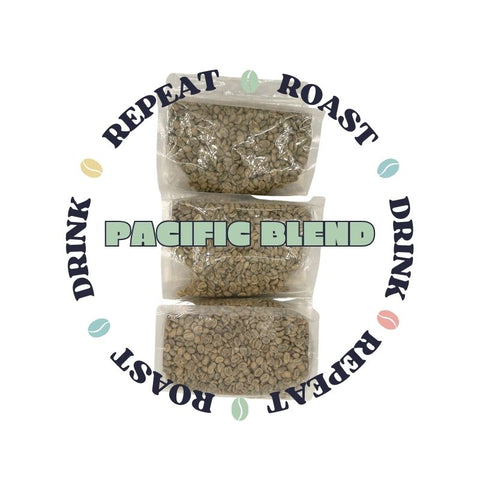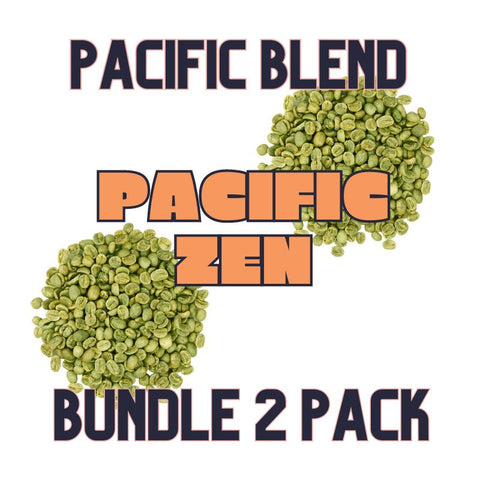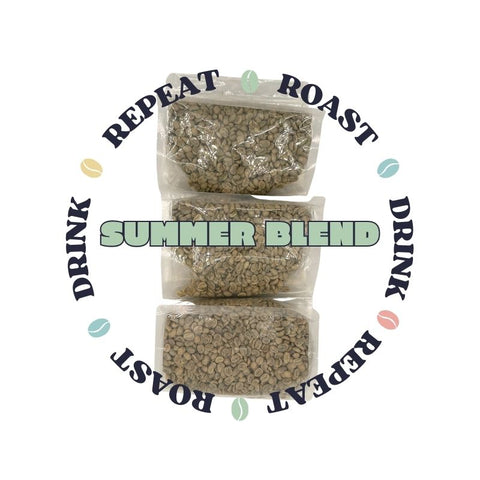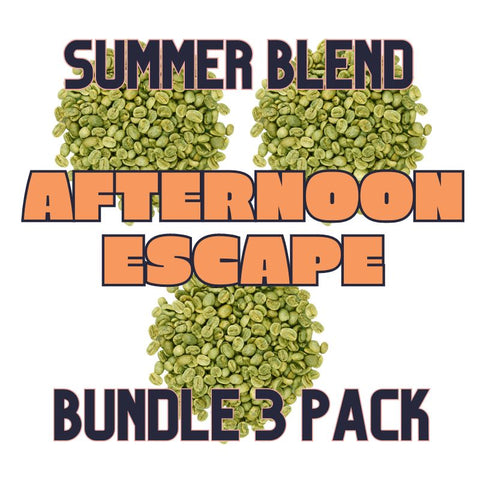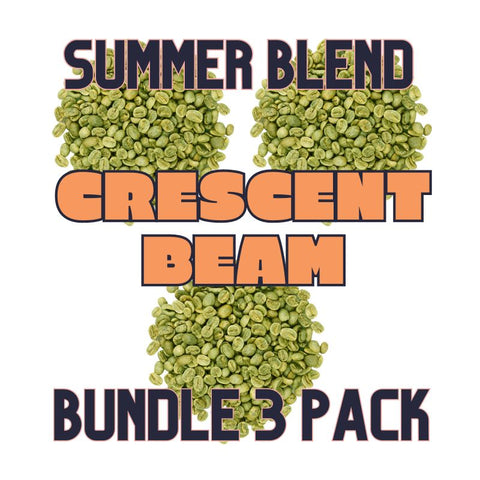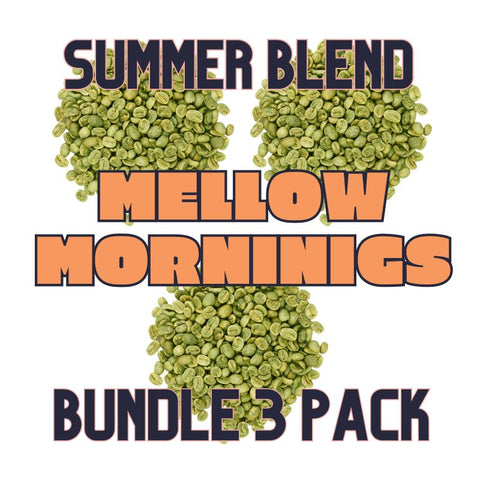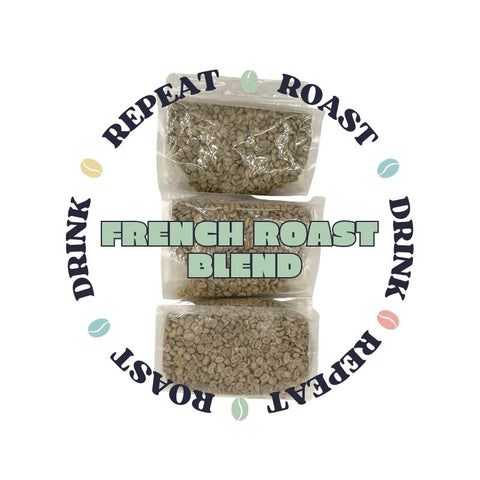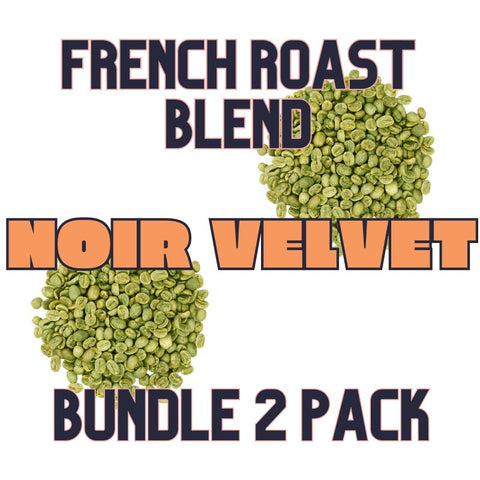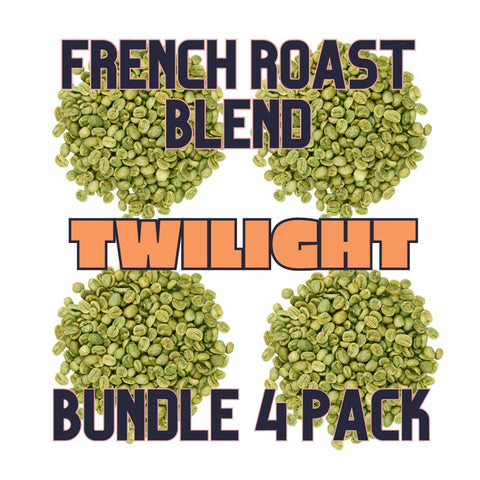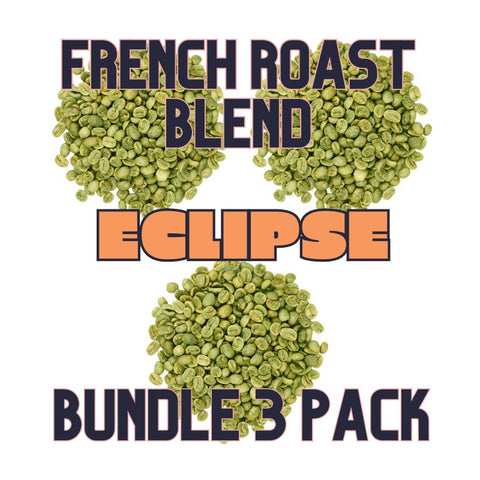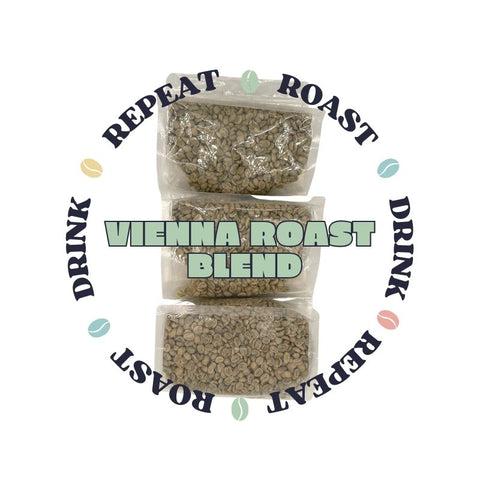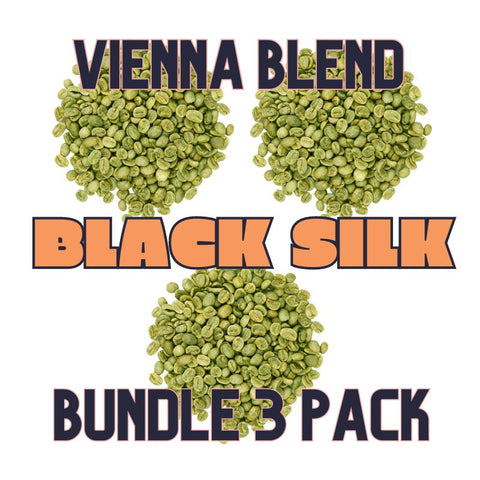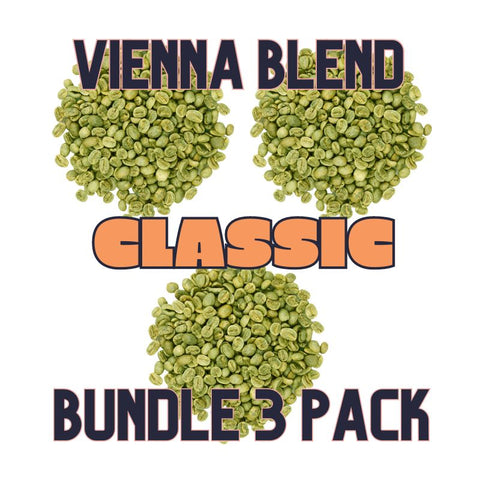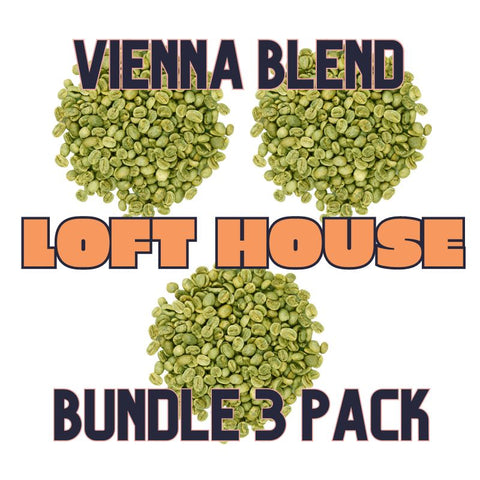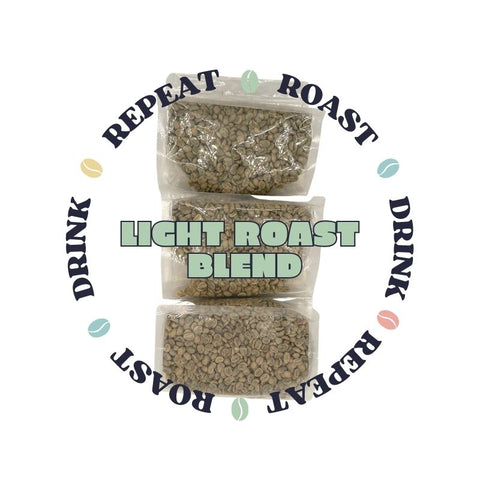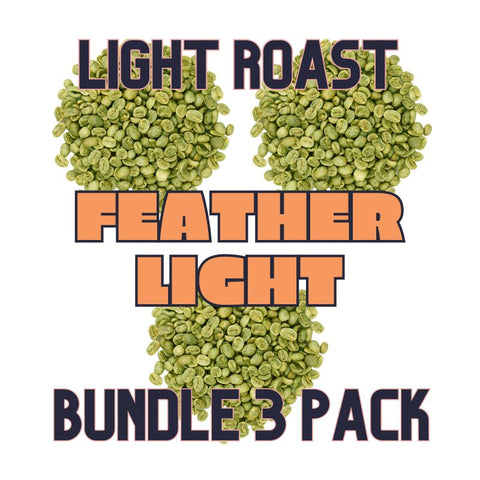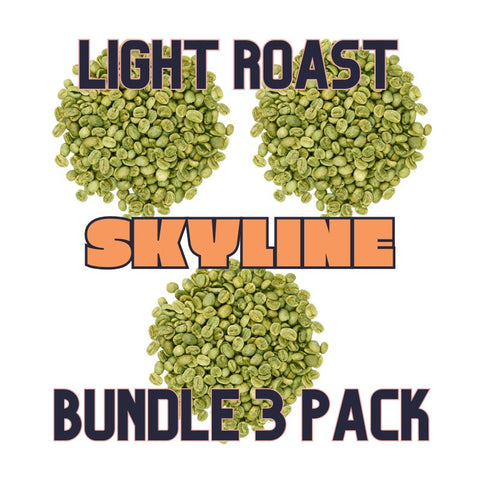Coffee Blends: A Complete Roasters Guide To Creating Your Signature Coffee Blend
Many coffee drinkers know what it's like to shop for coffee: There's a variety of different coffees and coffee flavors, ranging from single origin coffees to dozens of different blends. Blends had a bad reputation in the past because roasters often used leftover or low-quality beans. The results were often less than appealing.
Today, the world of coffee blends is full of exciting flavors and beautifully balanced cups. In this article, we'll look at different coffee blends, how they compare to single origin, why blend coffee, and much more. Whether you want to create your own blend or understand the topic better, you've come to the right place.
What Is A Coffee Blend?
A coffee blend combines coffee beans from at least two different origins. Blending two or three types of coffee beans is the most common. Some blends combine up to five coffees or more, but that requires the coffee roaster to understand each coffee's flavor profile truly.
Understanding The Difference Between Single Origin Vs Coffee Blends?
Single origin coffees are exactly what the name implies: All the beans in single origin coffees come from one farm. With a single origin coffee, you know exactly where each coffee bean comes from.
A blend combines beans from multiple sources from the same country but from different farms or countries.
Why Blend Coffee?
Mixing coffee beans from various sources creates interesting flavors. Blending also helps coffee taste the same all year.
Some coffee beans can cost a lot. Mixing them with cheaper ones keeps the coffee tasty without emptying your wallet. Also, sometimes coffee beans aren't perfect. If you blend coffee, you can fix tiny problems and improve the coffee.
Each roaster has a specialty coffee blend, which is often why customers return: They can't get the same blend anywhere else.
Coffee Blending Benefits For The Coffee Roaster
- Lower costs: Roasters create blends from various sources to create an affordable specialty coffee blend. They mix cheaper beans with higher-quality beans (e.g., robusta beans with arabica beans). Good roasters create a consistent flavor profile and pass the savings on to their customers.
- More creativity: Creating coffee blends is fun. A coffee roaster can use creativity to develop unique blends that wow coffee lovers.
- More consistency: Coffee blends allow roasters to sell a coffee that always tastes the same instead of hoping for the best with the coffee bean harvest.
- Create loyal customers: A unique, delicious signature blend is a great reason for customers to return!
Coffee Blending Benefits For The Coffee Drinker
- Great quality for less money: Talented roasters can blend expensive roasted beans with cheaper robusta coffee to lower production costs. The result: An affordable but delicious cup of coffee.
- Unique flavors: Thanks to blending beans from different origins, coffee lovers can enjoy many flavors and have a favorite blend for many different occasions.
- A consistent coffee-drinking experience: Coffee blends also allow for consistency which is great for coffee drinkers who prefer the same cup each morning.
- Easier to brew: Coffee blends are more forgiving than single origin coffees. It's easier to get a consistently good result.
How To Decide On A Coffee Blend?
Deciding on component coffees and a coffee blend is exciting but challenging. It gets easier when you keep the following questions and your answers in mind:
- What’s your goal? Are you aiming for a signature blend for your coffee shop? Or do you blend coffees for personal enjoyment?
- What’s your ideal flavor profile? Terms like acidity, body, aroma, and flavor notes are important here. You decide what the flavor profiles of your ideal coffee blends look like.
- What types of roast levels do you want to use? Do you want light, medium, or dark roasts only? Or do you want to mix all of them?
The decision also becomes easier once you're familiar with different coffee blends and blend ratios.
Common Types Of Coffee Blends
The list of coffee blends is endless. Some blends have stood the test of time and have become a favorite amongst large commercial roasters, independent coffee roasters, and home roasters.
- The Classic Breakfast Blend: This is a light-to-medium roasted blend people enjoy in the morning.
- Espresso Blends: An espresso blend is specifically for making espresso shots and works well with an espresso machine.
- Regional Blend: A regional blend showcases a region's or country's flavors.
- Light Roast Blend: This blend produces more delicate flavors and a cup with pronounced acidity and distinct origin flavors.
- Medium Roast Blend: A balanced combination of coffee beans, the middle ground between the bright acidity of light roasts and the deeper, richer tones of dark roasts.
- Dark Roast Blend: Perfect for people who love intense coffees with a bold flavor and deep body.
- House Blend: Starbucks, Costa, and most other coffee shops have one. It is designed to appeal to a large number of tastes. You could call it the mainstream blend.
- Fair Trade or Organic Blend: These blends use coffee beans from farms that follow specific ethical or environmental standards. They're aimed at consumers who value sustainability, fair pay for farmers, and responsible sourcing.
- Signature Blend: Signature blends are carefully crafted to reflect a brand's identity and offer a memorable taste that sets them apart. Coffee shops usually have one.
How To Create Your Own Coffee Blend
Choosing Component Coffees For Your Blend
After you decide on the flavor profile and purpose of your own coffee blends, it's time to examine the details: The component coffee. Ultimately, it's all down to your preferences or what you think your customers want. There are three different elements you need to consider for your own coffee blend:
- High notes: If you want a blend that is brighter and floral, you can choose between various Ethiopian, Kenyan, and Middle Eastern beans.
- Mid-Palate: This is the kind of coffee that’s a good base coffee. It’s the main taste experience in your blend. Beans from Guatemala, the Republic of Burundi, Costa Rica, and Colombia work well here.
- Sweet Base Notes: These are the beans that lead to descriptions like "nutty", "caramel notes", and "chocolatey". Brazilian, Mexican, or Peruvian beans are a great choice.
Thinking about combining the various flavors is one of the fun parts. You can create a bright but bold blend with chocolatey notes, a nutty, dark, intense blend, or a floral, light blend with notes of caramel. Not all combinations result in a great cup, so choose component coffees wisely.
How To Decide On A Blend Ratio
Once you know which beans you want to blend, the next question is: How much of each bean should go into your blend? The answer depends on how many coffees you want to use and which one will be the main star in your own blends. It's like in a movie: The main character gets the most attention while the co-stars have less screen time but still add a huge value to the overall experience.
So, which of your coffee beans is the main character, and which are the co-stars? Or do you want a balanced blend with two or more coffees that all play an equal role? Is the third coffee as important?
In the end, there’s some trial and error involved. You might not get the perfect blend ratio right away. That’s part of the process, especially when you’re new to blending coffees.
A good idea is to start with a 40:40:20 blend (40% sweet base note, 40% mid-palate, and 20% high notes) and work from there until you have the blend of your dreams.
It's a good idea to brew component coffees separately initially, so you can combine the liquid coffee and test what they taste together before making a big batch.
Should You Blend Pre Or Post Roast?
Another question is whether you should blend beans before or after roasting them. Both are viable options for a perfect coffee blend.
Blending before roasting is great because you roast each component coffee simultaneously and achieve a consistent blend. You don't have to consider different batch sizes, and it's a simple(r) process.
There's a problem, though, if the beans in your blend are very different regarding their moisture levels and size. They require different roasting times, and you could end up with beans that are over- or under-roasted.
To blend after roasting, i.e., mix roasted beans, enables you to roast each component of your blend to perfection. This is the best way to create a blend consisting of different roast types (light, medium, dark). Post-blending is the only way to achieve excellent results if your beans vary in size and moisture levels.
The disadvantage here is that you need to ensure you always roast the correct amount of each bean type and that you have to do more than one roasting process. But that's a small price to pay for great coffee with awesome flavour notes.
Coffee Blend Recipes To Try
If you're unsure where to start, look at the following coffee blend recipes and see whether you want to try one. Remember that the percentages are just starting points, and you can adjust them to create your own signature blend.
Breakfest Blends
| Origin | Morning Ritual | Dawn Patrol | Urban Sunrise |
|---|---|---|---|
| Brazil | 35% Medium | - | - |
| Ethiopia | 25% Medium-Light | - | - |
| Guatemala | - | 30% Medium | - |
| Honduras | - | 30% Medium | - |
| Colombia | 25% Medium | - | - |
| Costa Rica | 15% Medium | - | - |
| Papua New Guinea | - | - | 40% Medium-Dark |
| Mexico | - | - | 30% Medium |
| Peru | - | 20% Medium | - |
| Nicaragua | - | 20% Medium | - |
| Sumatra | - | - | 20% Medium-Dark |
Breakfast Blend Notes:
Morning Ritual: A well-rounded blend with Brazilian beans (35% Medium) for a chocolatey and nutty base, Ethiopian beans (25% Medium-Light) for floral and fruity notes, Colombian coffee (25% Medium) for smoothness, and Costa Rican beans (15% Medium) for a touch of brightness.
Dawn Patrol: A harmonious mix featuring Guatemalan beans (30% Medium) for spicy and chocolatey notes, Honduran coffee (30% Medium) for smooth, nutty flavors, Peruvian beans (20% Medium) for mild fruitiness, and Nicaraguan coffee (20% Medium) for a rich, balanced profile.
Urban Sunrise: A richer, bolder blend with Papua New Guinea beans (40% Medium-Dark) for tropical fruit and earthy tones, Mexican coffee (30% Medium) for smooth, chocolatey notes, and Sumatran beans (20% Medium-Dark) for a full-bodied, herbal complexity.
House Blends
| Origin | Basecamp | Urban Nest | Casa Roast |
|---|---|---|---|
| Brazil | 40% Medium | - | 30% Medium-Dark |
| Ethiopia | - | 30% Medium-Light | - |
| Guatemala | 20% Medium | - | - |
| Honduras | - | - | 25% Medium |
| Colombia | - | 40% Medium | - |
| Costa Rica | - | - | 20% Medium |
| Papua New Guinea | - | - | 25% Medium-Dark |
| Mexico | 20% Medium | - | - |
| Peru | - | 20% Medium | - |
| Nicaragua | 20% Medium | 10% Medium | - |
| Sumatra | - | - | - |
House Blend Notes:
Basecamp:A rich and balanced blend with a chocolatey and nutty base from Brazilian beans (40% Medium), complemented by the spicy and chocolate notes of Guatemalan coffee (20% Medium), the smoothness of Mexican beans (20% Medium), and the rich, balanced profile of Nicaraguan coffee (20% Medium).
Urban Nest:A vibrant and complex blend featuring the floral and fruity notes of Ethiopian beans (30% Medium-Light), the smooth and full-bodied Colombian coffee (40% Medium), the mild, fruity notes of Peruvian beans (20% Medium), and a hint of Nicaraguan richness (10% Medium)..
Casa Roast: A bold and dynamic blend combining the chocolatey and nutty flavors of Brazilian beans (30% Medium-Dark), the smooth, nutty flavors of Honduran coffee (25% Medium), the brightness of Costa Rican beans (20% Medium), and the tropical fruit and earthy tones of Papua New Guinea (25% Medium-Dark).
Espresso Blends
| Origin | After Hours | Shot In The Dark | Black Velvet |
|---|---|---|---|
| Brazil | 30% Medium-Dark | 40% Dark | - |
| Ethiopia | 20% Medium | - | 30% Medium |
| Guatemala | - | 20% Medium-Dark | - |
| Honduras | - | - | 20% Medium-Dark |
| Colombia | 25% Medium-Dark | - | 25% Dark |
| Costa Rica | - | - | 15% Medium-Dark |
| Papua New Guinea | - | 20% Dark | - |
| Mexico | 15% Medium-Dark | - | - |
| Peru | - | - | 10% Medium-Dark |
| Nicaragua | 10% Dark | - | - |
| Sumatra | - | 20% Dark | - |
Espresso Blend Notes:
After Hours: A balanced and rich blend with a chocolatey base from Brazilian beans (30% Medium-Dark), complemented by the floral and fruity notes of Ethiopian coffee (20% Medium), the full-bodied smoothness of Colombian beans (25% Medium-Dark), and a hint of Mexican richness (15% Medium-Dark) and Nicaraguan depth (10% Dark).
Shot In The Dark: A bold and intense blend featuring the deep, nutty flavors of Brazilian beans (40% Dark), the spicy and chocolate notes of Guatemalan coffee (20% Medium-Dark), the earthy depth of Papua New Guinea (20% Dark), and the rich, full-bodied Sumatran coffee (20% Dark).
Black Velvet: A complex and nuanced blend with the floral and fruity Ethiopian beans (30% Medium), the smooth and nutty Honduran coffee (20% Medium-Dark), the rich and bold Colombian beans (25% Dark), the bright and crisp Costa Rican coffee (15% Medium-Dark), and a touch of Peruvian subtlety (10% Medium-Dark).
Pacific Coffee Blends
| Origin | Blue Horizon | Pacific Zen |
|---|---|---|
| Papua New Guinea | 60% Medium | 50% Medium |
| Sumatra | 40% Medium-Dark | 50% Dark |
Pacific Coffee Blend Notes:
Blue Horizon: A bold and inviting blend that combines Papua New Guinea beans (60% Medium) for a vibrant, tropical fruitiness with Sumatran beans (40% Medium-Dark) for a rich, earthy finish. Perfect for a refreshing morning start.
Pacific Zen: A deep and complex blend, featuring Papua New Guinea coffee (50% Medium) for its bright, fruity notes, and Sumatran coffee (50% Dark) for a dense, chocolatey undertone. Ideal for those who appreciate a robust, flavorful cup.
Summer Coffee Blends
| Origin | Afternoon Escape | Mellow Mornings | Crescent Beam |
|---|---|---|---|
| Ethiopia | 50% Light Roast | - | 40% Light Roast |
| Colombia | 30% Light to Medium Roast | - | - |
| Costa Rica | 20% Light Roast | - | - |
| Guatemala | - | 40% Light Roast | - |
| Peru | - | 30% Light Roast | - |
| Mexico | - | 30% Light Roast | - |
| Papua New Guinea | - | - | 30% Light Roast |
| Nicaragua | - | - | 30% Light Roast |
Summer Blend Notes:
Afternoon Escape: Combines Ethiopian beans (50% Light Roast) for floral and fruity flavors, Colombian coffee (30% Light to Medium Roast) for sweetness, and Costa Rican beans (20% Light Roast) for clarity.
Mellow Mornings: Features Guatemalan beans (40% Light Roast) for spice and chocolate notes, Peruvian coffee (30% Light Roast) for fruitiness, and Mexican beans (30% Light Roast) for nuttiness with a hint of citrus.
Crescent Beam: Blends Ethiopian coffee (40% Light Roast) for berry and floral notes, Papua New Guinea beans (30% Light Roast) for tropical flavors, and Nicaraguan coffee (30% Light Roast) for sweetness.
French Roast Coffee Blend Ratios
| Origin | Noir Velvet | Eclispe | Twilight |
|---|---|---|---|
| Brazil | 50% Dark Roast | 30% Dark Roast | 20% French Roast |
| Sumatra | 50% French Roast | 40% French Roast | 30% Dark Roast |
| Colombia | - | 30% Dark Roast | 25% French Roast |
| Guatemala | - | - | 25% Dark Roast |
French Roast Blend Notes:
Noir Velvet: A robust blend with Brazilian beans (50% Dark Roast) providing a rich, chocolatey base, and Sumatran beans (50% French Roast) adding depth with their earthy and spicy undertones. Ideal for those who enjoy a strong, full-bodied coffee.
Eclispe: A complex blend that combines Brazilian beans (30% Dark Roast) for their boldness, Sumatran beans (40% French Roast) for a smoky depth, and Colombian coffee (30% Dark Roast) for a touch of sweetness and acidity. Perfect for a balanced, flavorful cup.
Twilight: A diverse blend featuring Brazilian beans (20% French Roast) for intensity, Sumatran coffee (30% Dark Roast) for a rich, earthy flavor, Colombian beans (25% French Roast) for smoothness, and Guatemalan coffee (25% Dark Roast) for a hint of chocolate and spice.
Vienna Coffee Blend Ratios
| Origin | Classic | Loft House | Black Silk |
|---|---|---|---|
| Brazil | 40% Vienna Roast | - | - |
| Sumatra | 30% Dark Roast | 50% Vienna Roast | 40% Vienna Roast |
| Colombia | 30% Vienna Roast | 30% Dark Roast | - |
| Guatemala | - | 20% Dark Roast | 30% Dark Roast |
| Nicaragua | - | - | 30% Vienna Roast |
Vienna Roast Blend Notes:
Classic: A balanced blend featuring Brazilian beans (40% Vienna Roast) for a smooth, slightly sweet profile, Sumatran beans (30% Dark Roast) for a rich, earthy body, and Colombian beans (30% Vienna Roast) for a touch of acidity and nuttiness. Ideal for those who appreciate a medium-dark coffee.
Loft House: A bold blend with Sumatran beans (50% Vienna Roast), offering a complex, spicy and earthy flavor, complemented by Colombian coffee (30% Dark Roast) for full-bodied sweetness and Guatemalan beans (20% Dark Roast) for a hint of chocolate and brightness.
Black Silk: A rich blend, combining Sumatran beans (40% Vienna Roast) for their characteristic depth and earthiness, Guatemalan coffee (30% Dark Roast) for a chocolatey spice, and Nicaraguan beans (30% Vienna Roast) for a creamy, nutty finish.
Light Roast Coffee Blend Ratios
| Origin | High Beam | Featherlight | Skyline |
|---|---|---|---|
| Brazil | 50% Light Roast | - | 30% Light Roast |
| Ethiopia | 50% Light Roast | 40% Light Roast | 40% Light Roast |
| Guatemala | - | 30% Light Roast | - |
| Peru | - | 30% Light Roast | - |
| Nicaragua | - | - | 30% Light Roast |
Light Roast Blend Notes:
High Beam: A balanced and bright blend that combines Brazilian beans (50% Light Roast) for a smooth, nutty profile with Ethiopian beans (50% Light Roast) for their characteristic floral and fruity notes. This blend is perfect for those who enjoy a light, refreshing cup with vibrant flavors.
Featherlight: An aromatic and lively blend featuring Ethiopian beans (40% Light Roast) for their distinct berry and floral qualities, Guatemala beans (30% Light Roast) for a touch of sweetness and a hint of chocolate, and Peruvian beans (30% Light Roast) for a mild, fruity acidity. Ideal for coffee drinkers seeking a complex, flavor-rich experience.
Skyline: A diverse blend that brings together Brazilian beans (30% Light Roast) for a base of soft nuttiness, Ethiopian beans (40% Light Roast) for bright citrus and floral notes, and Nicaraguan beans (30% Light Roast) for a creamy body with hints of chocolate. This blend is suited for those who appreciate a harmonious, nuanced cup.

